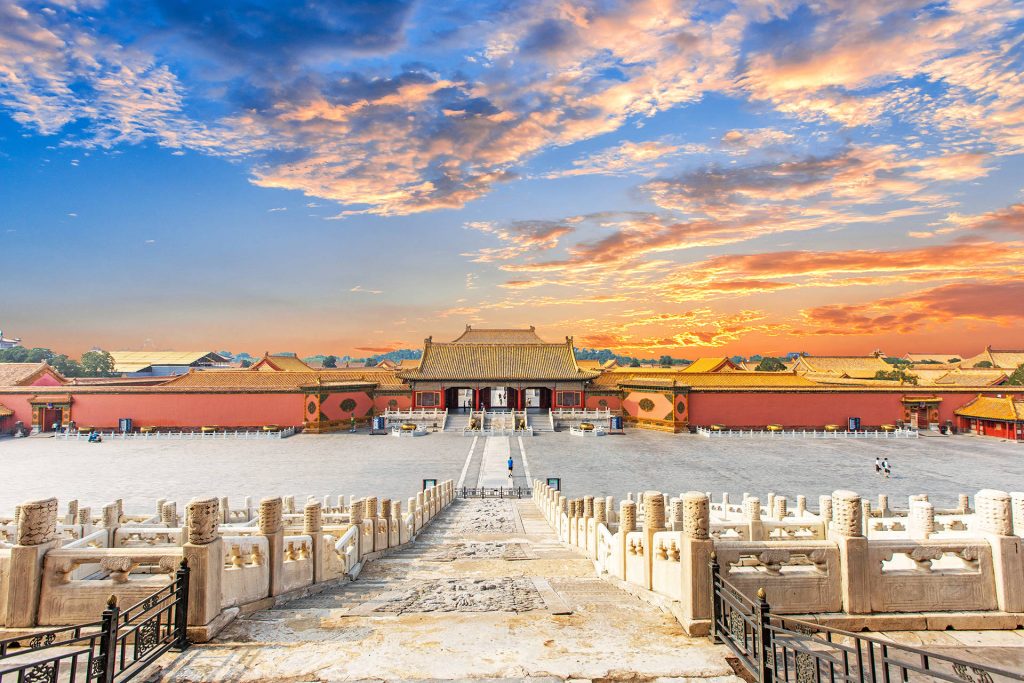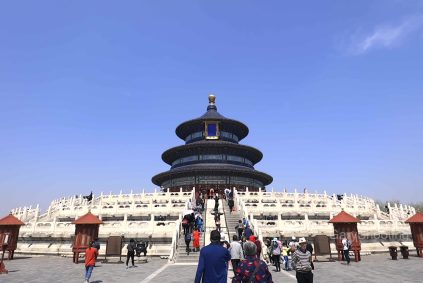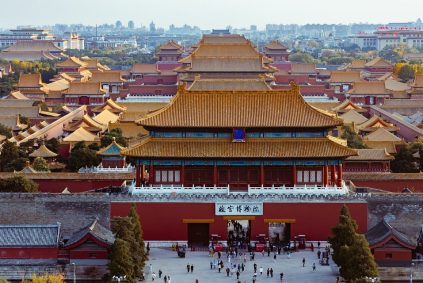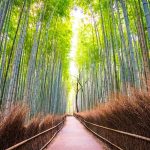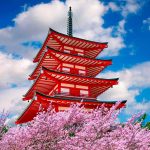Le Musée du Palais de Pékin possède une collection riche et diversifiée de trésors artistiques couvrant diverses périodes historiques de la Chine ancienne.. Voici quelques expositions recommandées qui valent le détour:
Le trésor de la mairie
1. Coupe Jin Ou Yonggu style Qianlong
Introduire: Cette coupe est de la dynastie Qing Jiaqing 2 années (1797) par le bureau de construction du palais Qing dans le but de faire, pour le Nouvel An de l'empereur, la cérémonie d'ouverture de la coupe de vin spéciale.
Caractéristiques: La tasse mesure 12,5 cm de haut, fait d'or pur, incrusté de perles et de pierres précieuses, forme régulière, magnifique décoration, style très royal.
Importance culturelle: Symbolisant la fondation permanente, porteur de la connotation culturelle importante de l'étiquette royale, reflétant l'ancien niveau superbe de production d'or et d'argent.
2. Pincez le motif de lotus de branche enveloppé d'émail de fil comme le four d'oreille
Introduction: Trésors d'émail de la dynastie Yuan, pleine hauteur 13.9 cm, calibre 16 cm, diamètre du pied 13.5 cm.
Caractéristiques: Le corps du four est en glaçure bleue, le col est décoré d'un motif de chrysanthème, l'abdomen est décoré d'un motif de branche de lotus, le savoir-faire est exquis, couleur vive et élégante.
Importance culturelle: représente le plus haut niveau d'artisanat de l'émail de la dynastie Yuan, porteur de la connotation esthétique et culturelle unique de cette époque.
3. Le long de la rivière pendant le festival de Qingming
Introduire: Zhang Zeduan, peintre de la dynastie des Song du Nord, dessine une longue peinture de genre en rouleau, largeur 24.8 cm, longueur 528.7 cm.
Caractéristiques: Sous la forme d'un long volume pour décrire la capitale des Song du Nord de la ville de Tokyo et les conditions de vie de toutes les classes sociales., l'image est vivante, riche en détails.
Importance culturelle: Ce n'est pas seulement une peinture exquise, mais aussi un témoignage historique saisissant, avec une haute valeur historique et artistique.
4. Répondre au message
Introduire: La note manuscrite écrite par Lu Ji du détritus de la dynastie des Jin de l'Ouest, la première tache d’encre de célébrité existante.
Caractéristiques: Le contenu est bref, et la calligraphie est élégante et raffinée, qui est un matériau précieux pour étudier les changements de caractères et de calligraphie.
Importance culturelle: Il a été témoin de l'évolution de la calligraphie chinoise et a eu une profonde influence sur les générations ultérieures de calligraphes..
5. Four à motif de dragon nuage de jade bleu
Introduire: Jade de la dynastie Song, 7.9 cm de hauteur, le corps du four est en jade bleu.
Caractéristiques: La texture est chaleureuse et délicate, le corps est décoré de dragon, modèles de nuages et d'eau de mer, et le fond intérieur est gravé de poèmes à sept caractères de Qianlong.
Importance culturelle: Il montre l'artisanat exquis et la profonde connotation culturelle de la fabrication du jade sous la dynastie Song..
6. Reine Xiaojing de la dynastie Ming avec trois dragons et deux phénix
Introduire: La couronne à crête de l'impératrice de la dynastie Ming découverte à Ming Dingling en 1956.
Caractéristiques: La couronne à crête est minutieusement réalisée en soie de bambou peinte., décoré de plumes de martin-pêcheur, pierres précieuses et perles. Le savoir-faire est fin et magnifique.
Importance culturelle: Il reflète le luxe et la délicatesse des ornements royaux de la dynastie Ming..
Expositions en vedette
1. “Jade sort de Kungang — Exposition spéciale de la culture du jade à la cour impériale de la dynastie Qing” (exposé)
Introduction: L'exposition sélectionnée 258 Pièces du palais de la dynastie Qing, boutique de jade Hetian, divisé en “source de jade”, “cadeau de jade”, “élégance de jade”, “jade intelligent” et “utilisation du jade” cinq unités.
Expositions clés:
Bouton dragon Pan en jade blanc “La dynastie Qing a commandé un trésor” : L'empereur Qianlong a nommé le premier des vingt-cinq trésors, symbolisant l'empereur de la dynastie Qing ordonné par l'identité orthodoxe du ciel.
Groupe Yueiling en jade blanc: Fait d'un morceau entier de jade blanc Hotan, conception exquise, peut être divisé et combiné, représentant douze mois.
Anneau vivant d'oreille d'animal en jade vert, pot à motif de poisson ewing: jade antique à l'amende, forme simple, décoration exquise.
2. Autres expositions permanentes
Porcelaine: comme le grand bol à grains de lotus à branches enveloppées de mer tricolore dans la période Zhengde de la dynastie Ming, le bol à grains de dragon du groupe rouge en émail de la période Kangxi de la dynastie Qing, qui montre le brillant chapitre de la culture céramique chinoise.
Calligraphie et peinture: y compris Tang, Chanson, Yuan, Dynasties Ming et Qing de calligraphie et de peinture, comme celui de Fan Kuan de la dynastie Song “Carte de voyage à River Mountain”, Dynastie Yuan Huang Gongwang “Carte de la résidence de montagne de Fuchun” et ainsi de suite.
Jade: En plus du palais Hetian jade de la dynastie Qing, il y a des morceaux de jade et des congs de jade du néolithique, ainsi que des pièces de jade et des sculptures en jade des dynasties Ming et Qing.
Horloge: Tels que le pavillon en or peint, le groupe à ouverture automatique, l'horloge impériale d'anniversaire immortel, jusqu'à 1.85 mètres, intégration de la technologie chinoise et occidentale, fabrication complexe.
Tissage: comme celui du maître de la dynastie des Song du Sud, Shen Zifan. “Carte de la pie Mei”, avec une variété de couleurs de soie tissée, technologie exquise, couleurs brillantes.
Conseils aux visiteurs
Heure de l'exposition: Des expositions spéciales telles que “Jade hors de Kungang – Cour de la dynastie Qing et exposition spéciale sur la culture Tian Jade” aura lieu à partir de janvier 7, 2025 à janvier 4, 2026, et d'autres expositions permanentes seront exposées pendant longtemps.
Comment acheter des billets: Les visiteurs peuvent réserver l'exposition via le “Musée du palais” mini programme pour réserver le billet du Musée du Palais.
Suggestions d'expositions: Selon les intérêts personnels et les horaires, planification raisonnable de l'itinéraire de la visite, en vous concentrant sur les expositions et les expositions qui vous intéressent.
Le Musée du Palais présente une gamme éblouissante d'expositions, dont chacun porte de riches connotations historiques et culturelles. Qu'il s'agisse du trésor de la mairie ou de l'exposition temporaire, le public peut apprécier la beauté de l'art et comprendre la vaste et profonde civilisation chinoise.

